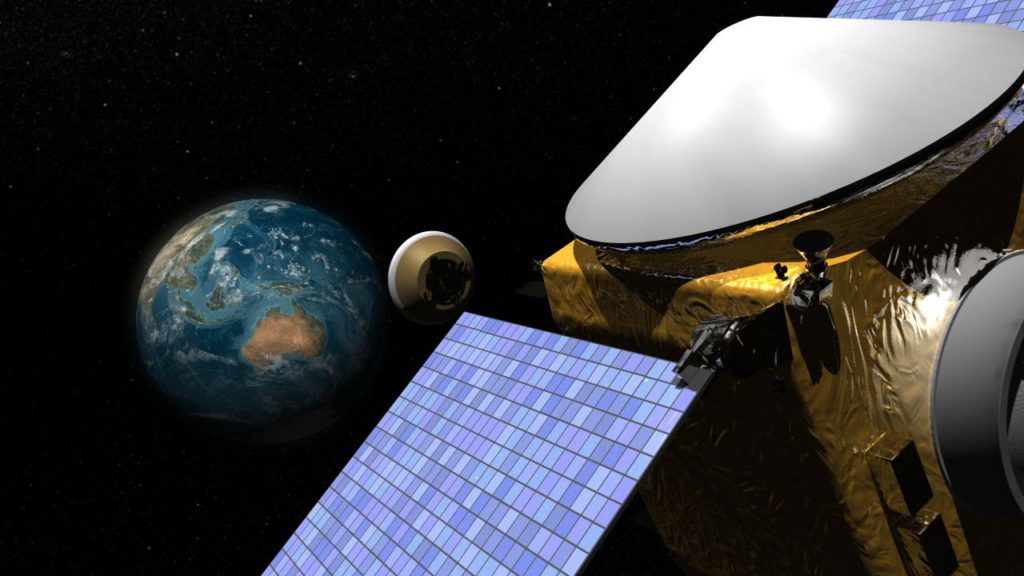July 12, 2014 2:22 pm
Robot overlords or humanity’s explorers? Find out Sunday with guest host Dr. Amy Mainzer

Artist’s concept of the OSIRIS-REx Sample Return Capsule being released for its return to Earth. Credit: NASA Goddard Space Flight Center
Robot overlords or humanity’s explorers?
With names like OSIRIS-REx and Hayabusa (“peregrine falcon” in Japanese), you might be forgiven for assuming these space probes were the former. In fact, they are both sample return missions that guest host Dr. Amy Mainzer tells comic co-host Chuck Nice all about in this week’s StarTalk Radio podcast, Cosmic Queries: Space Probes.
Some of the questions you asked were practical, like “How do you get past the asteroid belt if the objects are as closely spaced as they are in Star Wars Episode V: The Empire Strikes Back?” Or, “What factors impose limits on space probe design and construction?” Or, “How much exposure time does it take a space telescope to image a distant galaxy?”
But some of your questions require a more personal opinion from Amy, who is the Deputy Project Scientist on the Wide-Field Infrared Survey Explorer (WISE) and former Principal Investigator on the Spitzer Space Telescope.
For instance, one fan asked Amy what she thinks is the most important thing we’ve discovered on space missions using robots? Or, “Which are the rock stars among space probes?” Or, “If budget limitations force NASA to choose only one place in our solar system to probe for life, should it be Europa or Titan?” “Should NASA prioritize big missions, like the James Webb Space Telescope, or smaller, more affordable ones?”
By the time the episode is over, you’ll learn about how ion drives work and why they’re great for some missions but not for others, why some space probes like New Horizons, Cassini and Curiosity need a nuclear fuel supply and why they’re not nearly as dangerous as some fear, and what “slingshotting” is and why it is so important to exploring our solar system. You’ll understand why it’s so difficult exploring “Earth’s evil twin” Venus, and why it’s so hard to bring back core samples from the Martian surface. You’ll find out why spacecraft clocks have to be adjusted to reflect time dilation. And you’ll find out what happens to our intrepid explorers when their missions are over.
You’ll also get Amy’s opinion on warp drives and human interstellar travel and Chuck’s thoughts on asteroids and albino alligators in the sewers.
Join us for another great episode with guest host Dr. Amy Mainzer and comic co-host Chuck Nice this Sunday, July 13 at 7:00 pm ET on our website and on iTunes, SoundCloud, Stitcher and TuneIn.
That’s it for now. Keep Looking Up!
–Jeffrey Simons
Get the most out of StarTalk!
Ad-Free Audio Downloads
Ad-Free Video Episodes
Stickers & Mugs
Live Streams with Neil
Priority Cosmic Queries
Early-Access Videos
Learn the Meaning of Life
...and much more

 Become a Patron
Become a Patron

